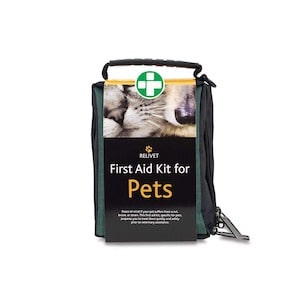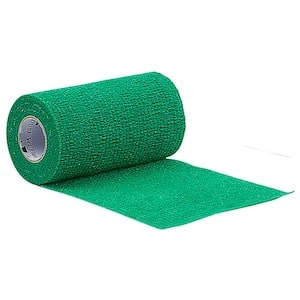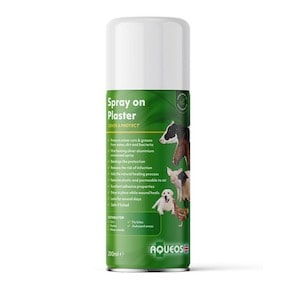Savlon is a popular antiseptic product that many people use to treat minor cuts and scrapes. But can you use savlon on dogs? The answer is yes, but with caution. Savlon can be used on dog wounds, but it has some risks and limitations that dog owners should be aware of.
In this article, we will explain the pros and cons of using savlon on dogs, and how to use it safely and effectively.
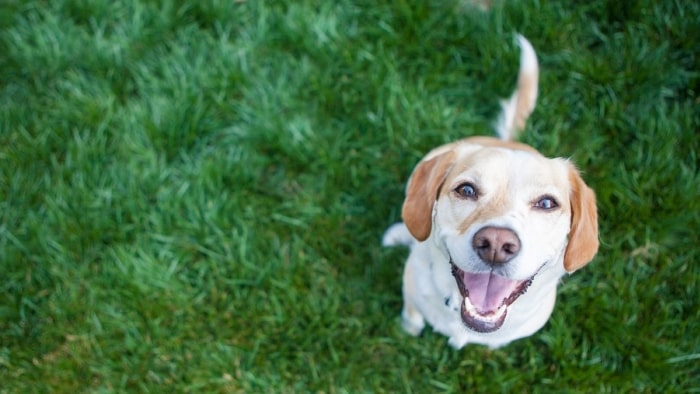
Key Takeaways
- Savlon is a human antiseptic product that can be used on dog wounds, but it has some risks and limitations.
- Savlon contains ingredients that are poisonous if ingested by dogs, such as cetrimide and chlorhexidine gluconate, and can cause symptoms such as vomiting, drooling, and seizures.
- Savlon should be diluted with water, applied sparingly, and covered with a dressing to prevent licking and ingestion. It should also be avoided on sensitive areas, such as eyes, ears, and genitals.
- Savlon is not a substitute for veterinary care, and dog owners should consult a vet if the wound is serious or infected. There are also some alternatives to savlon, such as dog-specific creams and shampoos.
You Might Also Like:
Why Is Savlon Poisonous to Dogs?
British chemical company called Imperial Chemical Industries (ICI) made savlon for several small medical treatments. The whole world is familiar with using savlon, then it obviously raises the question of whether can you use savlon on dogs.
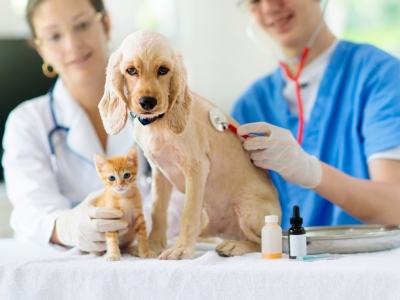
Savlon contains some essential ingredients like cetrimide and chlorhexidine gluconate. These are very poisonous if consumed by humans or dogs. Humans are intelligent enough to know that we can not consume savlon, but dogs are not.
According to Brittany Grenus, DVM from PetMd, “One of the primary reasons dogs lick their wounds is to help soothe the pain and discomfort. Licking the site of the wound overstimulates the brain, which in turn can help temporarily numb the pain. This is similar to humans rubbing or holding their wounds.“
So there is a high chance that when you apply savlon on your dog’s wound and he licks it up. But originally savlon is not meant to use for any pets. Although, it is not toxic to apply on dogs. So make sure you apply savlon on only those parts where he cannot lick.
If they lick it, you will observe symptoms like weakness, diarrhoea, lethargy, and vomiting at the initial stage.
“If you have any doubts as to the severity of your pet’s injury, play it safe and make an appointment with your veterinarian.” Stated in PetMd.
How you Can use Savlon on dogs
If you see your dog get wounded and you want to give first-aid immediately, you can apply savlon on places where he cannot lick. But rather you should keep some special creams which are made for the use of dogs only. Use it only in case you have to use savlon when there are no options available.
Things to Keep in Mind While Using Savlon
- First, do not think you can heal his wound by only savlon. It is not a permanent solution.
- Secondly, never leave him alone when you have applied savlon on your dog, keep monitor and distract him if he tries to lick it.
- Lastly, apply it and make sure it doesn’t get spread, do not overuse it.
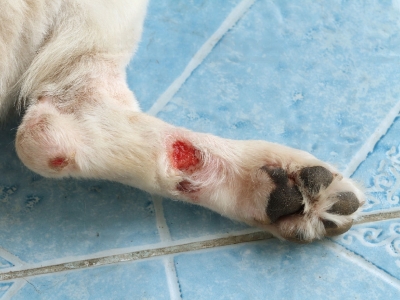
You Cannot Use It on Your Dogs:
- Eyes
- Mouth
- Nose and
- Inside ears
- Where he can lick
You Can Use It Safely on Your Dogs:
- Around the genitals
- Back
- Base of tail
- Belly
- Bum
- Dog wrinkles
- Head
- Legs
- Neck
- Outside of ears
- Paws
- Tail
These are some body parts of dogs, where you can apply savlon but in small quantities. There are many other alternatives of savlon like antiseptic cream for dogs available in the market. They are lick-free and dog-safe creams.
According to VCAHospital. “DO NOT use soaps, shampoos, rubbing alcohol, hydrogen peroxide, herbal preparations, tea tree oil, or any other product to clean an open wound, unless specifically instructed to do so by your veterinarian.“
How Can I Comfort My Dog in Pain?
Definitely, you can not feel his pain, but we can give him that kind of environment where he will forget about his pain.
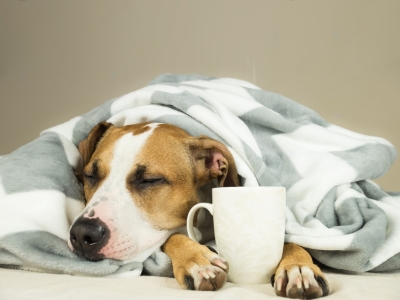
The first thing you can do is, provide him with a comfortable fluffy area to lie down and also give him a warm blanket. You can message him on his neck and tummy. Put his favourite toy beside him and bring him his favourite food. Make sure his favourite food should not unhealthy treats.
Will Savlon Hurt My Dog?
If you have a dog, you must know that cuts and wounds are free with your dog. Basically, savlon is safe to use on dogs. It is an effective antibacterial product and you have to use it in order to heal the wound.
If you are applying it for the first time, it might hurt for a bit but in friction of the second, it will feel good. So savlon will not hurt your dog. Instead, it will accelerate the healing process. Just keep in mind, never try to use it on large wounds.
How to Apply Savlon to Your Dog?
Applying savlon is an easy process. If you are outside of the home and you found a wound, the first thing you should do is take him home immediately and comfortably. Now see the cut or wound care. If it’s not deep and there is no bleeding, only you can use savlon.
- First, clean the area with tissue paper or antiseptic wipes. Remove any dirt, grit, grass, or other foreign objects from the wound.
- Then before applying savlon directly, dilute it by mixing clean water.
- Now, this is the most important step. If the wound is in that place where your dog can lick, do the dressing on the wound to prevent licking. If it’s not in a place where the dog can lick, then it is better to keep it open.
FAQs
Is excessive licking a sign of pain in dogs?
Not certainly, but the following are things which are common during the pain: Shaking, flattened ears, low posture, aggression, grumpy temperament, panting or crying, excessive licking or scratching a specific area, reluctant to play, interact or exercise, lameness (limping), stiffness after rest, loss of appetite.
What should I do if my dog accidentally ingests Savlon?
If your dog accidentally ingests savlon, immediately contact your nearest vet and also note how much he ingests it. It can cause stomach upset or other adverse reactions or if it was consumed in large quantities, then it can be poisonous.
Can Savlon cause any adverse effects on dogs?
If you use savlon incorrectly then there are chances that your dog suffers from skin irritation, redness, or allergic reactions. Also if your dog licks the salon, then it can be poisonous or can cause stomach upset, vomiting, and diarrhoea. Therefore, it is better to consult your vet instead.
Can I use Savlon on my dog’s ears or around their eyes?
Big no, you should not use savlon on a dog’s ears and eyes or even near them. You should never use it in sensitive areas. It might develop allergy or infection and also can cause other health issues.
Can I use Savlon to clean my dog’s paws or coat?
No,savlon is not made for the use of bath purposes. So you should not use it to wash your dog’s paws or coat. Instead, you should have dog shampoo. Savllon can lead your dog to skin irritation and other health-related problems.
Conclusion
By now you must know that can you use Savlon on dogs or not. You can use savlon but there are some precautions which are necessary to make. Like, you should not consider it as a permanent solution for your do’s injury. Never use savlon near the eyes and ears.
If your dog licks it or ingests it by mistake, you should immediately contact your vet. Although, there are several dog creams available for the same purpose, instead try those. It will keep your dog safe and you out of worry.
Reference:
- Coates, J. D. (2020, April 17). How to Clean and Treat Dog Wounds at Home. Retrieved February 20, 2024, from https://www.petmd.com/blogs/fullyvetted/2013/april/how-to-take-care-of-your-pets-minor-wounds-30187
- First aid for cuts and grazes. (n.d.). PDSA. Retrieved February 20, 2024, from https://www.pdsa.org.uk/pet-help-and-advice/pet-health-hub/medications/first-aid-for-cuts-and-grazes
- Care of Open Wounds in Dogs | VCA Animal Hospital. (n.d.). Vca. Retrieved February 20, 2024, from https://vcahospitals.com/know-your-pet/care-of-open-wounds-in-dog
